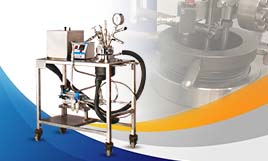All You Need to Know About RDE-OES Elemental Analyzer
The technique of oil analysis has come a long way and in recent years, most oil analysis is conducted by using RDE-OES Elemental Analyzer that applies optical emission spectroscopy technique for measuring parts per million (ppm) levels of contaminants, wear metals and any additive in oil samples.
But before we learn more about this analyzer, let's take a look at the way spectroscopy works. Below we have enumerated a few important concepts related to the technique and how oil analysis is influenced by it. Keep reading till the end to find out.
The Principles of Spectroscopy
Spectroscopy allows the quantification and identification of existing elements in the materials. It relies on the fact that each element consists of a unique atomic structure and when there is application of energy to it, each element results in emission of specific color or wavelength of light.
The spectroscopy principles of the following –
- It is possible to distinguish the elements since each element has their unique spectral line pattern.
- In a sample, the light emission is proportional to the element's quantity which allows the determination of the element's concentration.
- The light has a specific frequency or wavelength determined by the transitioned energy of the electron. As it is possible, the transition of several energies in complex atoms.
- If dispersed light uses a dispersing element such as prism, it will result in a line spectrum. These are distinct from the atomic structure of one element only.
- The iron spectrum that has atomic number 26 is more complex with several emission lines within the visible spectrum in correspondence to several possible transitions of electronics.
- If the sample has more than one element, spectral lines of seemingly distinct varied wavelengths will be visible in each element. In order to detect and quantify such elements in a sample, these lines are needed to be separated.
The RDE-OES Spectrometry
Spectrometers that display a huge number of spectral lines from an excited or heated sample are known as optical emission spectrometers. Every OES included three main components and they are –
- Introducing energy to the sample by excitation source
- Optical system that helps in separating and resolving the resulting emission into its component wavelength.
- Readout system that allows identification and measurement of separated light into its wavelength components and displays the information to the operator for optimal usage.
It was from the early days in the oil analysis process, the oil has been sparked or burned between a carbon rod electrode and rotating carbon disc electrode. The oil sample is put on the sample cap and the disc is immersed partially in the sample. The disc rotates as the burning method proceeds.
The Automation in RDE Spectrometry
While there are challenges involved in RDE Spectrometry, this method also offers practical solutions in oil analysis. This automated system is based upon two parts – one is exchange of consumable disk electrodes with a robot and the other is an automatic sample changer which introduces 48 oil samples.
If you want to know more about this technique then make sure to get in touch with expert services.








